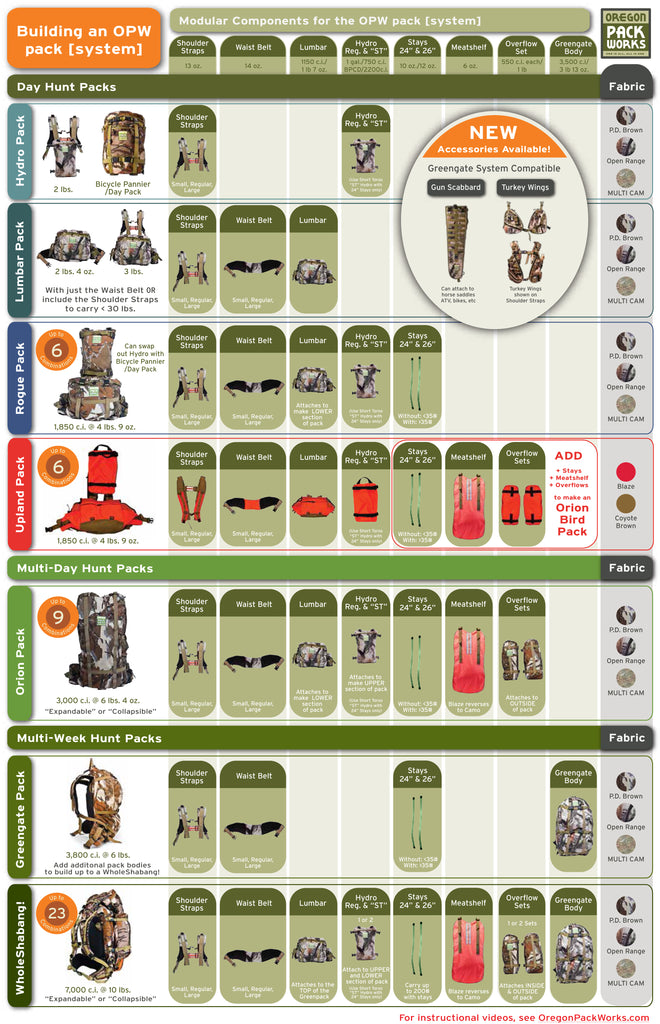Your Cart is Empty
Orders can take up to 3 weeks at times.
 Picking and choosing–buying and selling. It seems like we spend years trying to find the right boot for for our planned backcountry hunting–if our destination changes, it just takes us longer–a moving target!
Picking and choosing–buying and selling. It seems like we spend years trying to find the right boot for for our planned backcountry hunting–if our destination changes, it just takes us longer–a moving target!
So, unless you’re blessed to live in a larger urban area, where you may be able to try the many boots availble, you may never actually “touch” the boots you plan to order after reading countless testimonials about how “awesome,” or “comfortable” this or that boot is. And, why this one should win out over another is just, mind boggling!
Just like a backpack, each boot is individual to fit every persons foot–We’re just not all the same–Thank God!
The first thing to ask yourself is, “How stiff, and/or, how tall of boot , DO I NEED?” Does one really need a $400 SHEEP hunting-boot for loads lesss that 50 pounds? And, the flat ground an outfitter carried us into? or road walking? Of course not! The SHEEP boot has at least a half-shank that is firm; Carbon fiber, fiberglass or something “stiff”.
Why you ask? Steep, off camber talus slopes need a sole that is “less” torsionally flexible than a softer–less forgiving–but, more comfortable lighter weight boot. The reason they’re tall is to protect the ankles–two ways; Ankle roll, and Ankle bruising–from the rocks–when you’re really “F—-in” tired, fourteen hours into it! And, that boot will cause you Plantar Faciitis faster than you can blink! Don’t do it!
The first deciding factor for your hunt starts with: 1). The Terrain–Steep, talus slopes common to the Rocky mountains (northern New Mexico, then north through the Yukon, and Alaska), but if one is only hiking trails, well that comes into consideration. 2). Foot fitness–See accompanying article: Fit, Active and Pain-free: Foot Health. By, Physical Therapist, Steve Leary (aka “the Stretch Guy”), of, Hands On, Physical Therapy, based in Bend, Oregon.
(This could become a regular feature of this widely respected journalistic masterpiece.)
As Backcountry hunters (article written for Fire Fighters), you all know the importance of flexibility, strength and conditioning. When was the last time you applied these concepts to your feet?
Let’s consider the foot for a moment. The foot is made up of 28 very small and relatively delicate bones, with numerous small-to-relatively-large muscles, and about as complex a fascia structure as any area of the body. In short, it is an extremely complex, delicate structure which acts as the foundation of balance, stability and mobility for the whole body. Clinically, we see the foot intimately involved in injuries of the knee, hip, SIJ, back and neck, not to mention things like headaches and jaw problems.
Some quick tips on maintaining this oft-forgotten body part: 1). The foot likes to be stretched; this can be done by taking your bare foot, bending your ankle into dorsiflexion, placing your toes on the wall and sliding the foot to flat on the floor (bending your toes into extension on the wall). It can also be accomplished by self- massage of your foot. 2. The foot needs strengthening, in order to maintain its complex spring system (even in those of you with flat feet); one of the easiest ways to do this is to stand, equal weight on both feet, (concentrating on one foot first) try to place your weight equally at 3 points of contact: (1) the center of the heel, (2) the base of the 1st toe (1st metatarsal) and (3) the base of the 5th toe (5th metatarsal). Once you have achieved this “Tripod Foot” on each foot individually, try to get it on both sides simultaneously. This is an exercise that can be done in shoes or barefoot (it can be done while standing talking with friends, standing in line etc.). Do these exercises often. Also, don’t forget to moisturize your feet: cracked heels and foot infections can dramatically change how you bear weight through them.
Respectfully, Stephen M. Leary, PT Thank you, Great Master!
Comments will be approved before showing up.


A. Chest
B. Sleeve
C. Waist
D. Inseam